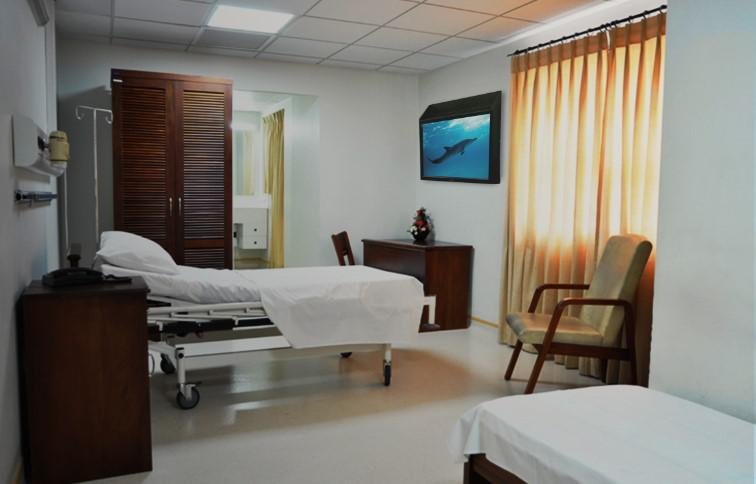Protecting Lives: The Importance of Suicide-Resistant TV Enclosures in Mental Health Facilities
- 1 Compliance with Safety Standards: Meeting Regulatory Requirements for Mental Health Facilities
- 2 The Key Features of Suicide-Resistant TV Enclosures
- 2.1 1. Robust Construction:
- 2.2 2. Anti-Ligature Design:
- 2.3 3. Shatterproof Screens:
- 2.4 4. Tamper-Resistant Hardware:
- 2.5 5. Ventilation and Temperature Control:
- 3 Benefits of Suicide-Resistant TV Enclosures
- 3.1 1. Increased Safety for Vulnerable Individuals:
- 3.2 2. Compliance with Safety Standards:
- 3.3 3. Long-Term Cost Savings:
- 4 Conclusion:
In mental health facilities, ensuring patients’ safety and well-being is paramount. One particular area that requires careful consideration is the provision of suicide-resistant TV enclosures. These specialized enclosures are designed to prevent self-harm incidents involving televisions, providing a secure environment for patients while allowing access to entertainment and educational content.
The need for suicide-resistant tv enclosure arises from the recognition that individuals in mental health facilities may be at a higher risk of self-harm or suicide. By implementing these secure enclosures, healthcare providers can significantly reduce the potential for harm without compromising patient comfort or access to recreational activities.
Compliance with Safety Standards: Meeting Regulatory Requirements for Mental Health Facilities
- Compliance with safety standards is of utmost importance in mental health facilities. These facilities are responsible for the well-being and safety of their patients, and ensuring that they meet regulatory requirements is crucial in providing a secure environment for those seeking help.
- Safety regulations for mental health facilities encompass various aspects, including suicide prevention protocols and adherence to Joint Commission accreditation standards. These regulations are designed to protect patients from harm and ensure they receive the highest quality of care.
- Implementing suicide prevention protocols is essential in mitigating the risk of self-harm incidents within mental health facilities. This includes thorough assessments, continuous monitoring, and the implementation of appropriate interventions to support individuals who may be at risk.
- Furthermore, obtaining accreditation from reputable organizations such as the Joint Commission demonstrates a facility’s commitment to meeting rigorous safety standards. Accreditation ensures that mental health facilities adhere to best practices in patient rights, emergency management, staff qualifications, and physical environment safety.
By complying with these safety regulations and meeting regulatory requirements, mental health facilities can create an environment that promotes healing and recovery while prioritizing patient well-being. It instills confidence in patients and their families and establishes a standard of excellence within the industry.
The Key Features of Suicide-Resistant TV Enclosures
When it comes to ensuring patient safety in mental health facilities, secure suicide-resistant TV enclosures play a crucial role. These specially designed enclosures are equipped with critical features that make them suicide-resistant and provide a safe environment for individuals in need of care.
1. Robust Construction:
One of the primary features of suicide-resistant TV enclosures is their robust construction. These enclosures are typically made from durable materials such as steel or aluminum, providing a sturdy barrier to protect the enclosed TV. This strong construction is essential for preventing individuals from easily damaging or manipulating the enclosure.
2. Anti-Ligature Design:
Suicide-resistant TV enclosures are designed with a focus on minimizing ligature points. Ligature points are areas where individuals might attach a cord or rope for self-harm purposes. By incorporating an anti-ligature design, these enclosures significantly reduce the risk of such incidents, contributing to a safer environment for occupants.
3. Shatterproof Screens:
To further enhance safety, suicide-resistant TV enclosures often feature shatterproof screens. Traditional TV screens can pose a risk if broken, as the shards may be used for self-harm. Shatterproof screens help mitigate this risk by preventing the formation of sharp fragments, ensuring that the enclosure remains secure even in the event of damage.
4. Tamper-Resistant Hardware:
Securing the enclosure with tamper-resistant hardware is another crucial aspect. Suicide-resistant TV enclosures come equipped with screws, bolts, and other fasteners that are difficult to remove without specialized tools. This discourages attempts to dismantle or manipulate the enclosure, adding an extra layer of protection.
5. Ventilation and Temperature Control:
Proper ventilation is essential for electronic devices like TVs to prevent overheating. Suicide-resistant TV enclosures have ventilation systems that allow adequate airflow while maintaining a secure environment. Additionally, some enclosures offer temperature control features to ensure optimal performance and longevity of the enclosed electronic equipment.
Benefits of Suicide-Resistant TV Enclosures
1. Increased Safety for Vulnerable Individuals:
The primary benefit of suicide-resistant TV enclosures is the increased safety they provide for individuals in environments where there may be concerns about self-harm. By implementing these enclosures, institutions such as mental health facilities, prisons, and hospitals can create a secure environment for those at risk.
2. Compliance with Safety Standards:
Institutions are often required to adhere to specific safety standards and regulations. Suicide-resistant TV enclosures help organizations comply with these standards by incorporating features that address potential risks and hazards associated with traditional TVs in high-risk settings.
3. Long-Term Cost Savings:
While suicide-resistant TV enclosures may have a higher initial cost than standard enclosures, their durability and resistance to tampering contribute to long-term cost savings. The reduced likelihood of damage or replacement can result in lower maintenance and replacement expenses.
Conclusion:
Suicide-resistant TV enclosures play a crucial role in enhancing safety and mitigating risks in environments where there is a concern for self-harm. Their robust construction, anti-ligature design, shatterproof screens, tamper-resistant hardware, and ventilation features collectively contribute to a secure and controlled environment, benefiting both the individuals within these settings and the institutions responsible for their well-being.

















